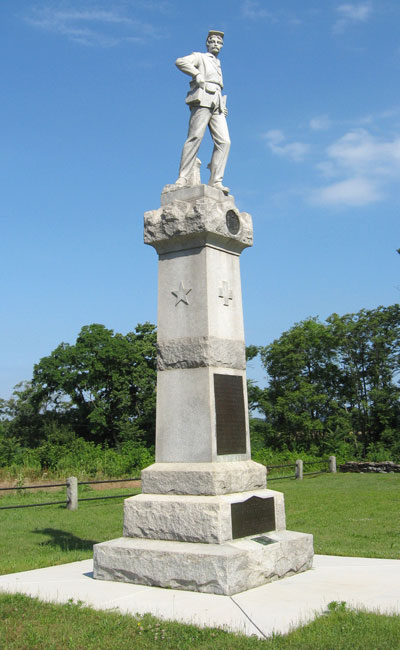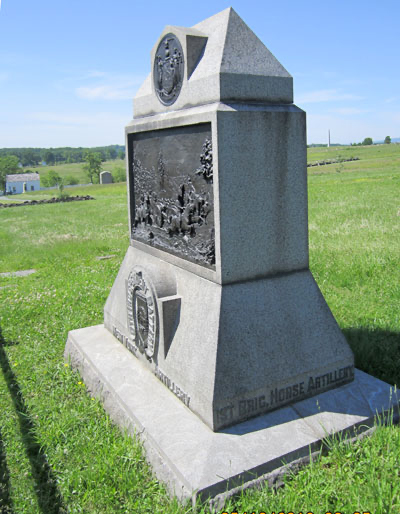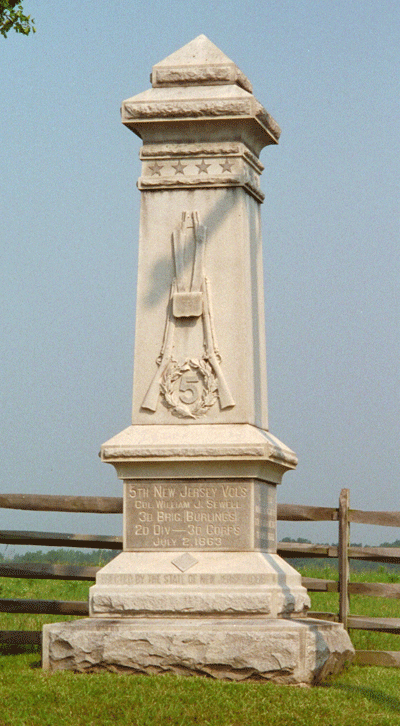
Part II – Rahway Boys Go into Battle
Submitted by Al Shipley, City Historian and Rahway Library Research Consultant
Over the duration of the Civil War, more than 535 young men who called Rahway home, would enter the Union Army with many participating in some of the bloodiest campaigns. Rahway boys were recruited into dozens of different regiments. A number of the recruits were assigned to the 5th and 14th New Jersey Infantry units, two regiments that would win distinction in battle. Black residents joined the United States Colored Troops (USCT). Some of these recruits would end up fighting in the battle-tested 22nd Regiment. The Rahway artillery unit, Company K of the 9th New York State Militia (the focus of the April article), would also see much action.
After leaving Rahway Station on June 18, 1861, Company K reported to Hagerstown, Maryland where they were issued their weapons and received orders to cross the Potomac River to Martinsville, Virginia to drive rebel forces from Charlestown. The company was then assigned to Washington D.C. to provide a line of defense to protect the capital. On August 25, the unit was detached from the 9th Regiment to become the 6th Independent New York Battery, commonly called “Bramhall’s Battery, and was placed in General Joseph E. Hooker’s division. While under Hooker’s command, the battery participated in the Peninsula Campaign including the siege of Yorktown, the battles of Williamsburg, Fair Oaks, and the Seven Day’s Battle.
On October 6, 1862, they accompanied three-thousand cavalry in an effort to recover government property on the Orange and Alexander Railroad. Rebel troops had succeeded in removing the confiscated goods across the Rappahannock before the cavalry arrived, but the excellent work of the 6th and their quickness in action was noted by Brigadier General William Barry. The general would later honor the unit by changing its designation to a flying battery (also called a horse battery). The 6th would thereafter travel in conjunction with cavalry units on reconnaissance missions and raids. “Bramhall’s Battery” was kept in constant service to the close of the war participating in no fewer than a dozen engagements including the major battles of Chancellorsville and Gettysburg.
The foot soldiers of the 5th New Jersey Infantry saw heavy fighting throughout the war, but especially on July 2, 1863, the second day of the three- day battle at Gettysburg. Under the command of Colonel William Sewell, the regiment, in the face of deadly fire, engaged in brutal, often hand-to-hand combat as it tried to hold a strategic position. Ten months later, on May 5, 1864, the 5th was again tested, this time at the Battle of the Wilderness. There, the regiment, consisting of 200 men, suffered losses amounting to sixteen killed, 119 wounded, and twenty-two missing.
Members of the 14th New Jersey Infantry fought bravely at the Battle of Monocacy (July 9, 1864) tragically losing two-thirds of its contingent. Against heavy odds, Union forces withstood five attacks thus delaying the enemy’s advance towards Washington. The delay gave Union reinforcements time to halt the enemy in their last desperate plan to attack the capital. The heroic actions of the 14th earned them the nickname “The Monocacy Regiment.”
Following the Emancipation Proclamation on January 1, 1863, the recruitment of black men began in full force and free blacks and freedmen rushed to recruiting stations to join the USCT. Enough men would enlist to eventually fill 175 regiments making up one-tenth of the entire Union Army. Men from Rahway were mustered into the 22nd, 25th, 41st, and 127th Regiments. Their actions would bolster the Union war effort at the most critical time.
The 22nd was active in the siege operations at Petersburg and Richmond, the Battle at Dutch Gap, Chaffin’s Farm, and the Battle at Fair Oaks. A specific instance illustrating the bravery of the 22nd occurred on June 15, 1864 when the regiment “met the enemy near Baylor’s Farm as Confederate shells were tearing up the troops. As the Union lines began to fall back, they were saved when the 22nd led a charge and joining with the 5th USCT drove the enemy from their position, captured one gun, and saved the division’s honor.” The regiment was selected as one of the first Union regiments to victoriously enter the captured Confederate capital of Richmond on April 3, 1865. A part of the regiment was also on duty at Appomattox Court House on April 9, 1865 when General Ulysses S. Grant accepted the surrender of General Robert E. Lee and his Army of Northern Virginia.
When the terrible war was finally over, Rahway’s citizen-soldiers returned to their home town to resume the lives they had left behind. They did, however, maintain a kindred brotherhood with their fellow vets by establishing a local Grand Army of the Republic (GAR) post. The post would be called William F. Barry Post 27, so named to honor the general who lifted “Bramhall’s Battery” to the status of Flying Battery. The fraternal organization remained an active and respected group in the city until 1923 by which time most of the Civil War veterans had passed.


